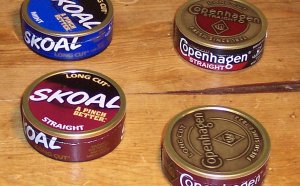
Tobacco history facts
 Nicotine was isolated from tobacco leaves (Nicotiana tabacum) in 1828, but the powerful effects of nicotine were already well recognized. The tobacco plant is native to the Americas and its use as a medicine and stimulant goes back at least 2000 years and most likely many millennia before that. South American temple carvings show Mayan priests enjoying the benefits of this drug from smoking tobacco through a pipe. Tobacco appears to part of the healing arts and sacred rituals of many of the native peoples of the Americas. (Image:Aztec women are handed flowers and smoking tubes before eating at a banquet, Florentine Codex, 16th century.)
Nicotine was isolated from tobacco leaves (Nicotiana tabacum) in 1828, but the powerful effects of nicotine were already well recognized. The tobacco plant is native to the Americas and its use as a medicine and stimulant goes back at least 2000 years and most likely many millennia before that. South American temple carvings show Mayan priests enjoying the benefits of this drug from smoking tobacco through a pipe. Tobacco appears to part of the healing arts and sacred rituals of many of the native peoples of the Americas. (Image:Aztec women are handed flowers and smoking tubes before eating at a banquet, Florentine Codex, 16th century.)
Use in Europe and the American Colonies
There are various theories of how tobacco was introduced to Europe, but Christopher Columbus and his crews undoubtedly sampled this native weed and succumbed to its spell. Once introduced into Europe, tobacco for use in pipes and as cigars spread rapidly. Some thought it was powerful medicine and might even cure the Plague, while others saw it as an evil and nasty habit.
By the early 1600s tobacco had become an important cash crop exported to Europe by the new colonies in North America. Some historians believe the colonies would not have prospered without the money from this toxic crop. Tobacco is a demanding crop to grow, and as tobacco farming spread south there was a growing demand for workers. In the 1700s tobacco plantation farmers began importing African slaves to work the tobacco farms. Tobacco became important not only for local economies, but also for national governments as soon as it became apparent that one could tax the people's habit.
 The Invention of Cigarettes
The Invention of Cigarettes
It took many years to refine and develop tobacco consumption as a means of drug delivery. Tobacco consumption was initially confined to chewing or smoking with a pipe or cigar. Cigarettes were invented in 1614 by beggars in Seville, Spain, who collected scraps of cigars and rolled the tobacco into small pieces of paper. Cigarette consumption grew gradually in popularity, but cigarettes were expensive to produce until 1880, when a machine to roll cigarettes was patented. This invention ushered in cheaper cigarettes and major tobacco corporations. Sir Walter Raleigh popularized pipe smoking in England. He was beheaded on October 28, 1618, but before his head dropped he requested to smoke a final bowlful of tobacco. (Image: James Albert Bonsack's cigarette rolling machine, invented in 1880 and patented in 1881.)
VIDEO REVIEWS


Share this Post
Related posts
Tobacco history Timeline
A tobacco history timeline published today by the Robert Wood Johnson Foundation showcases a decrease in smoking among adults…
Read MoreCopenhagen tobacco history
Copenhagen wasn t an overnight success by any means . In fact, it was pretty much impossible to find outside of Pennsylvania…
Read More
 A plant alkaloid, found in the tobacco plant, and addictive central nervous system (CNS) stimulant that causes either ganglionic stimulation in low doses or ganglionic blockage in high doses. Nicotine acts as an agonist at the nicotinic cholinergic receptors in the...
A plant alkaloid, found in the tobacco plant, and addictive central nervous system (CNS) stimulant that causes either ganglionic stimulation in low doses or ganglionic blockage in high doses. Nicotine acts as an agonist at the nicotinic cholinergic receptors in the...










